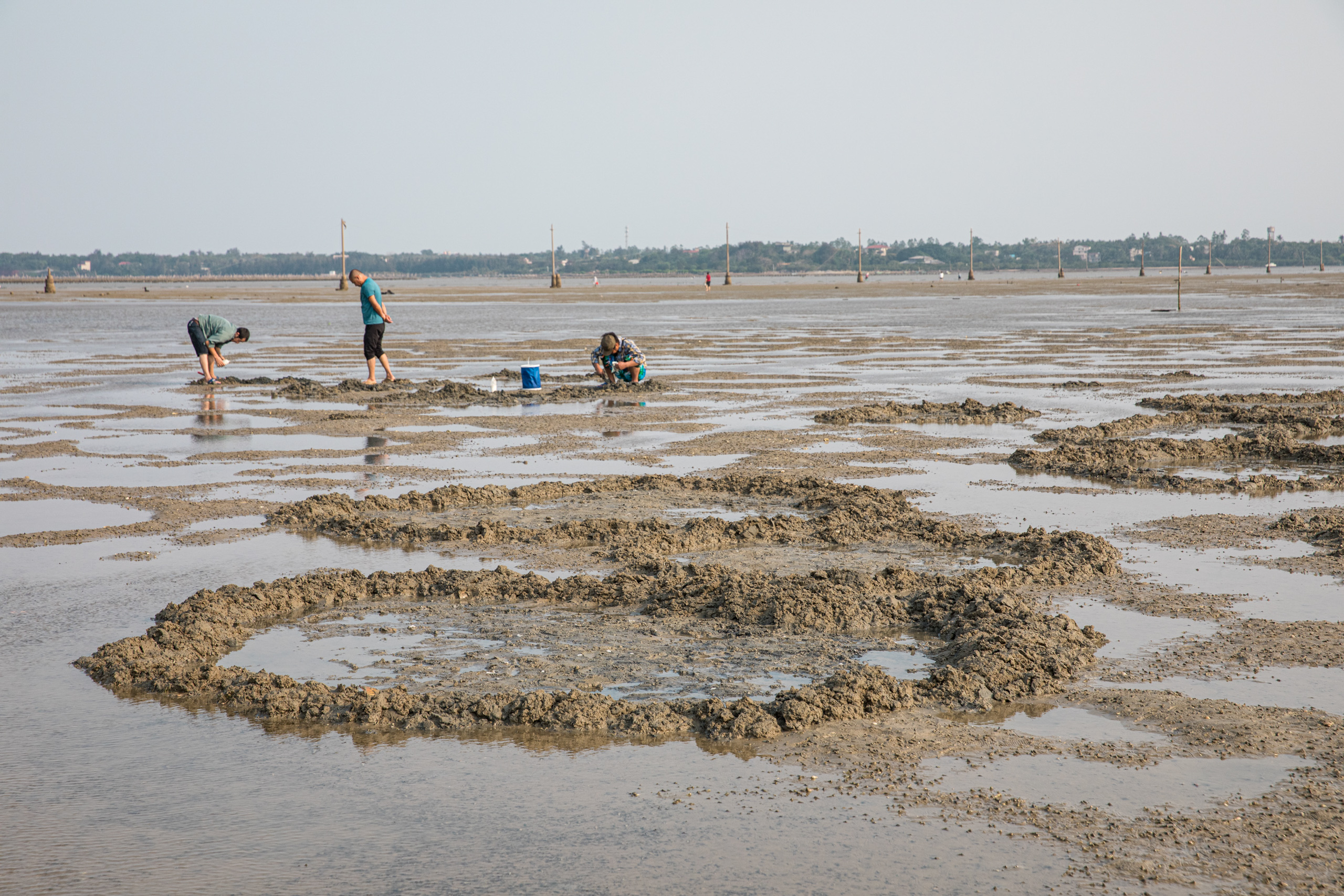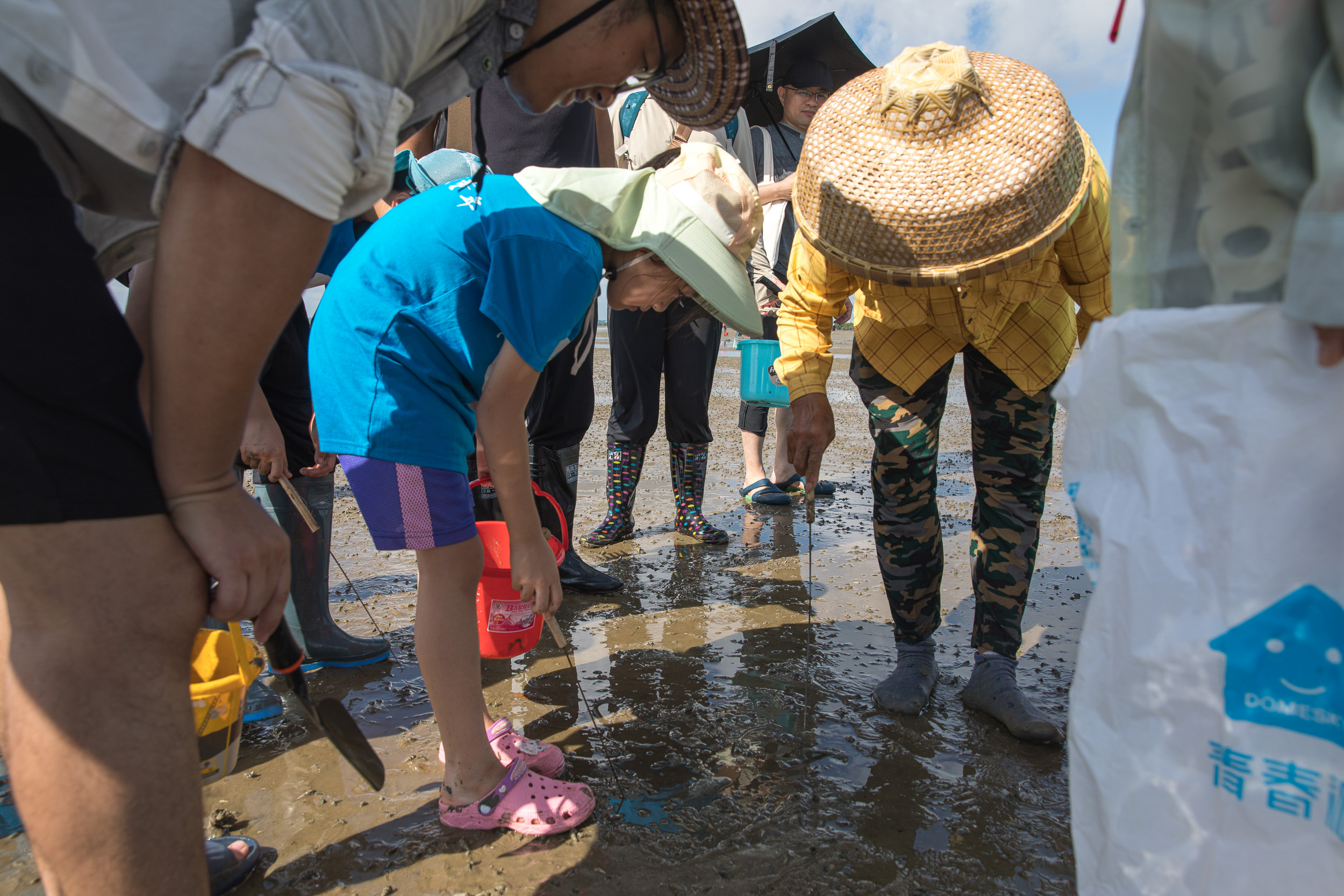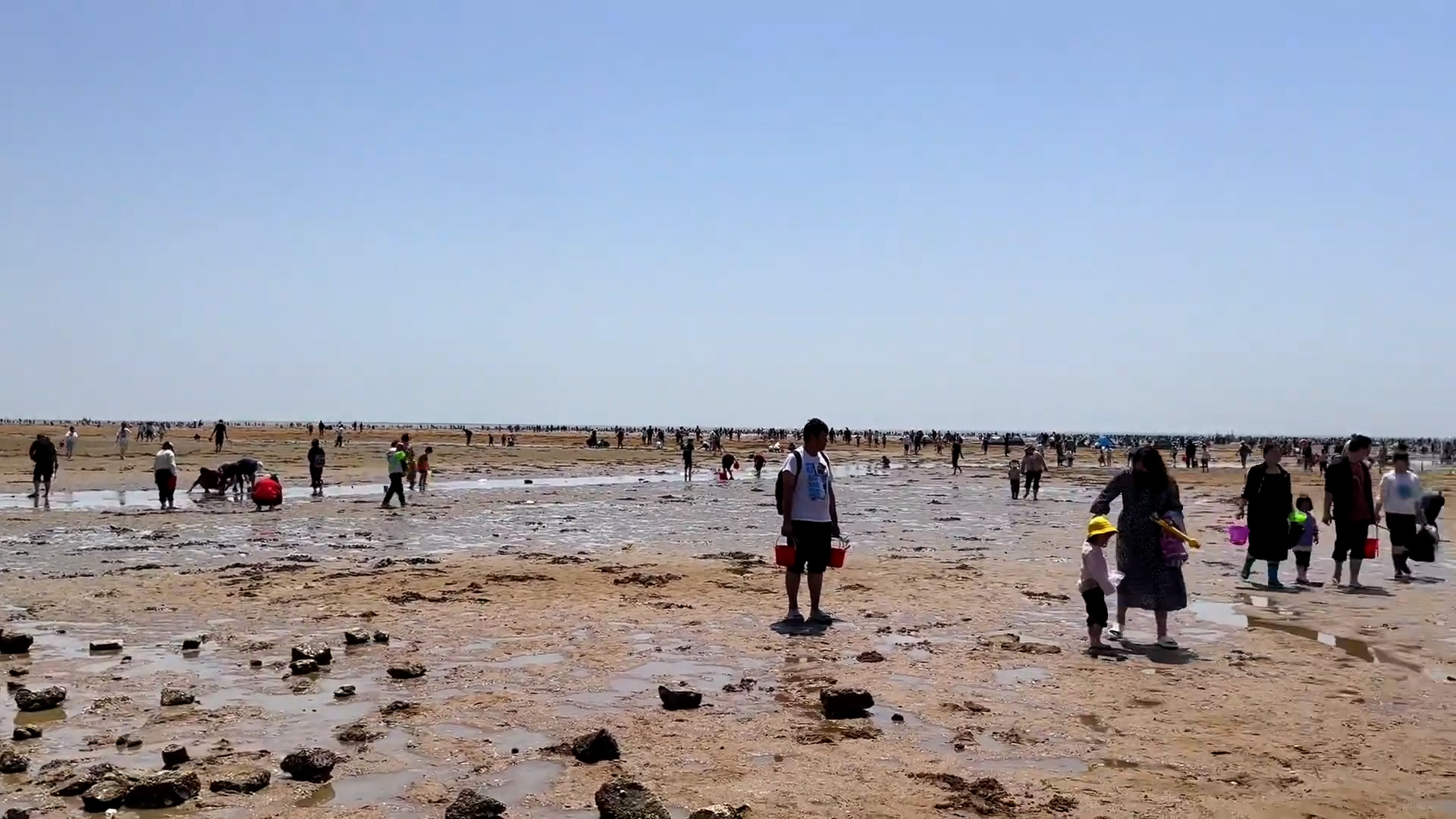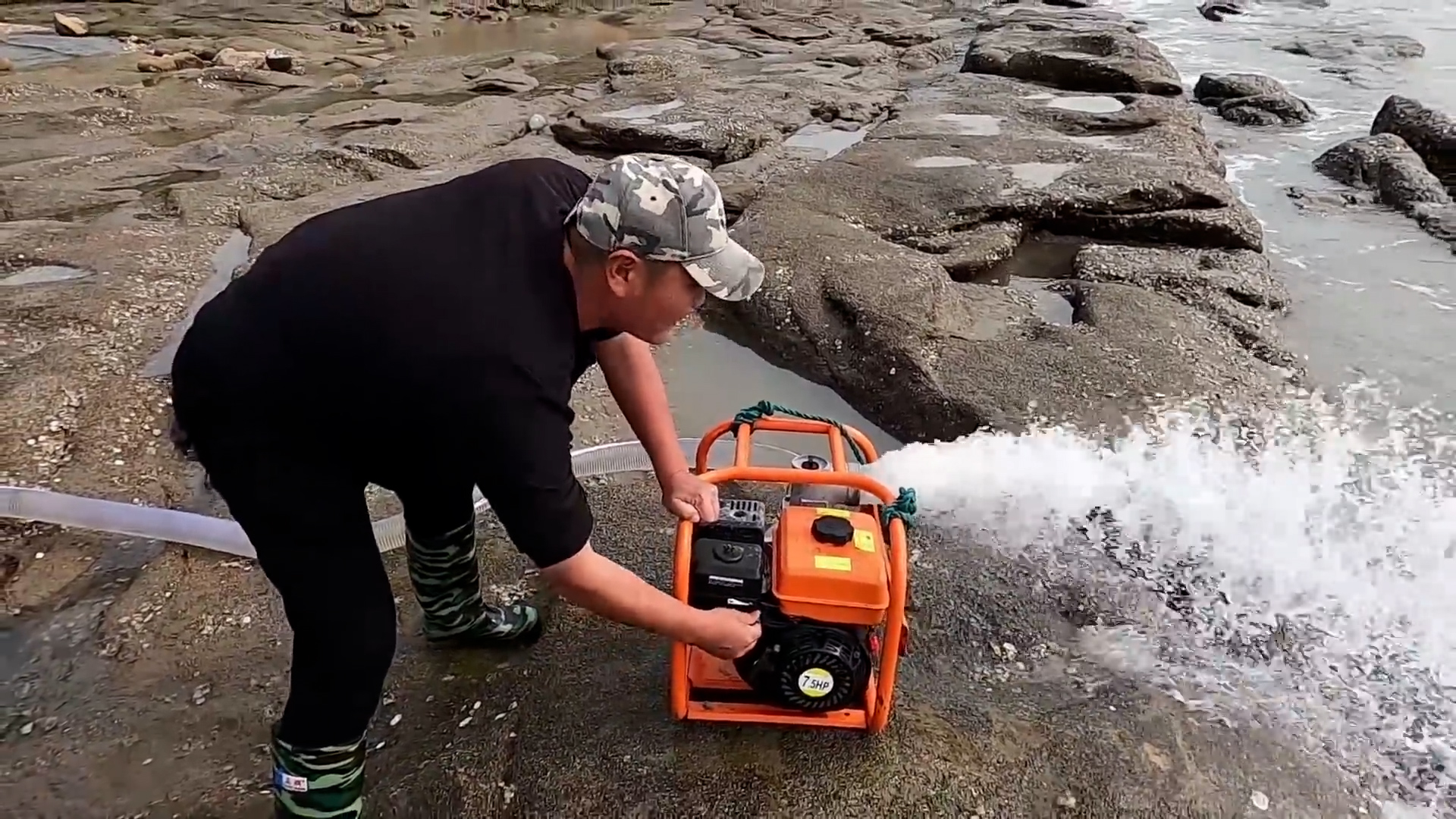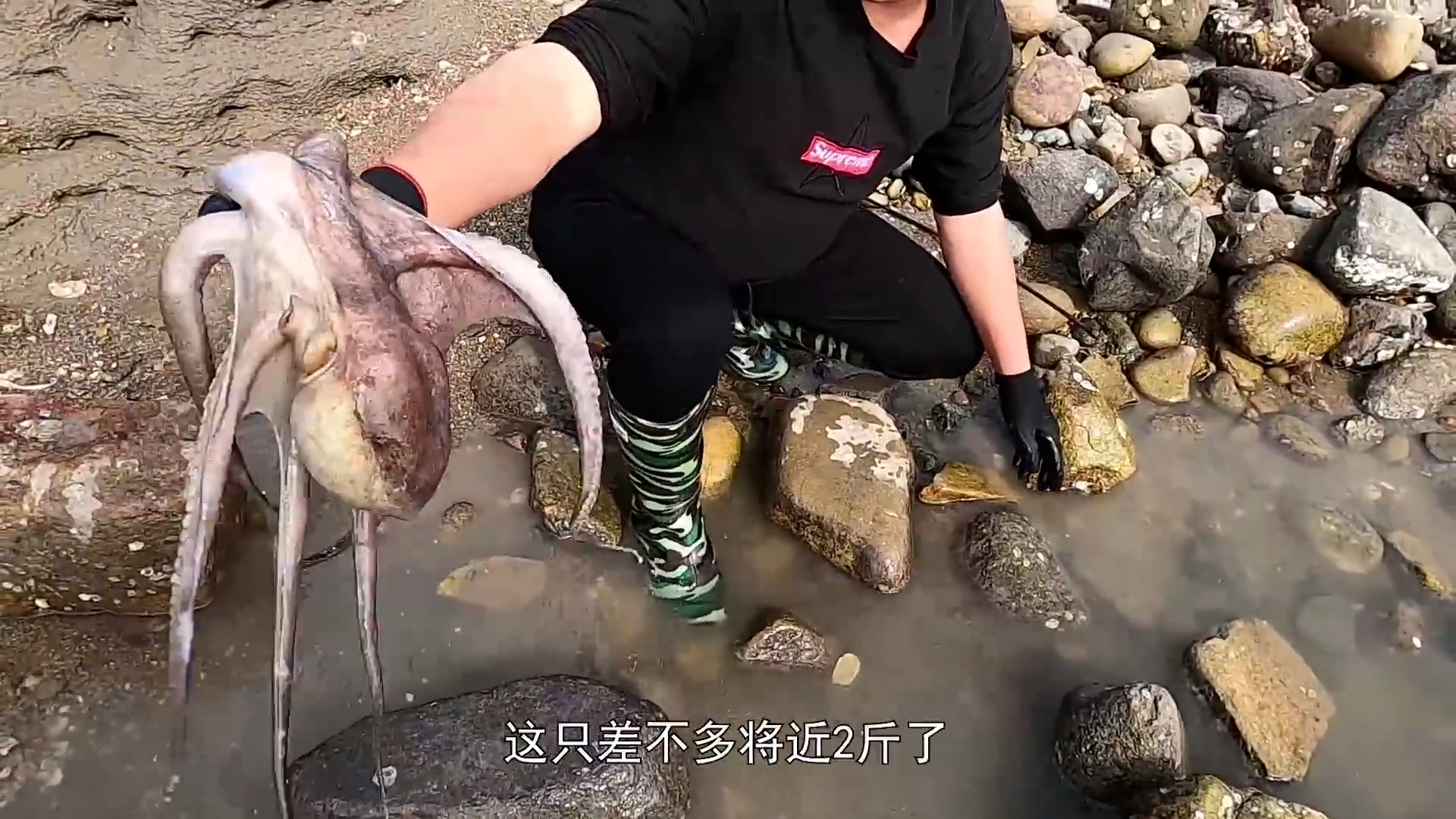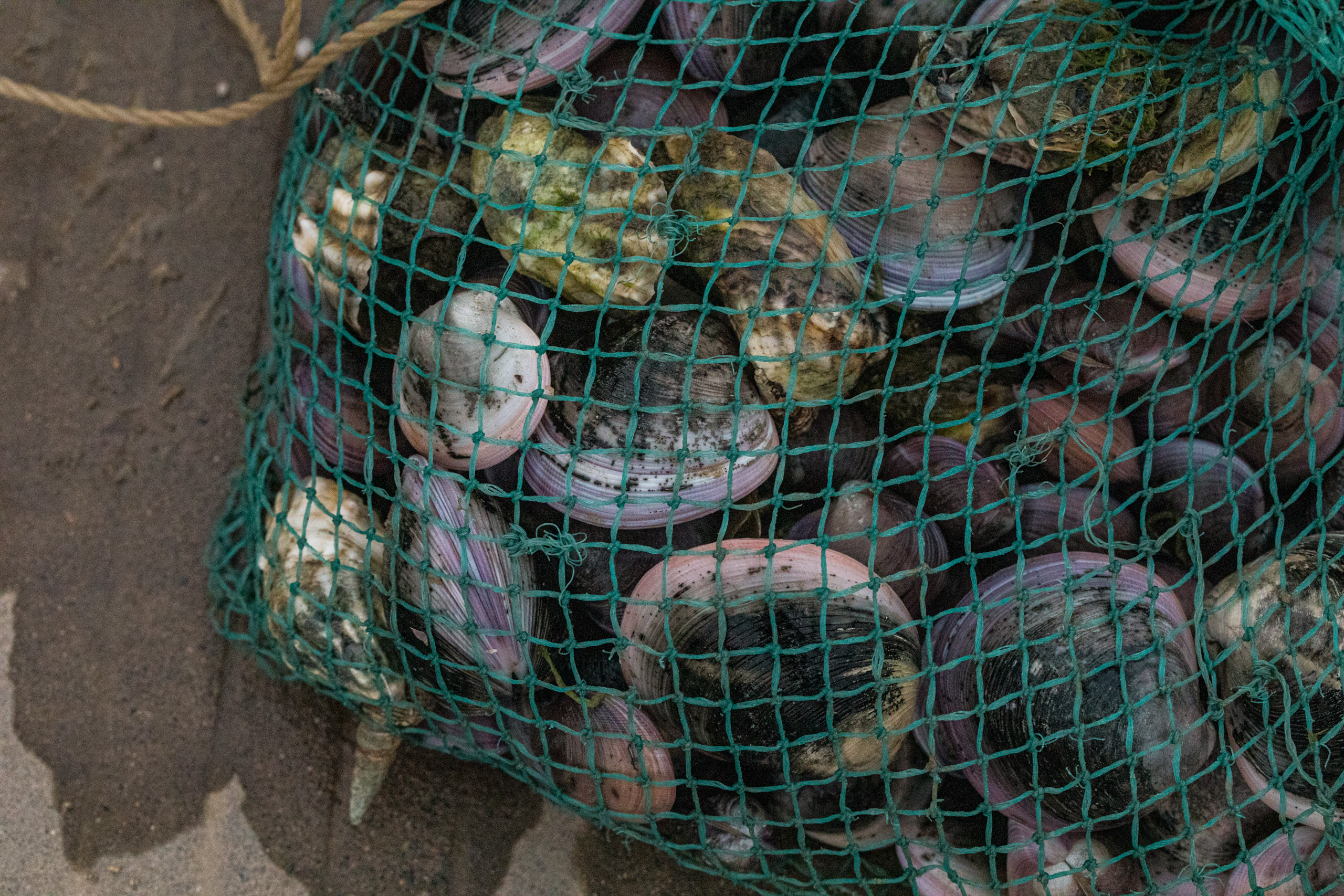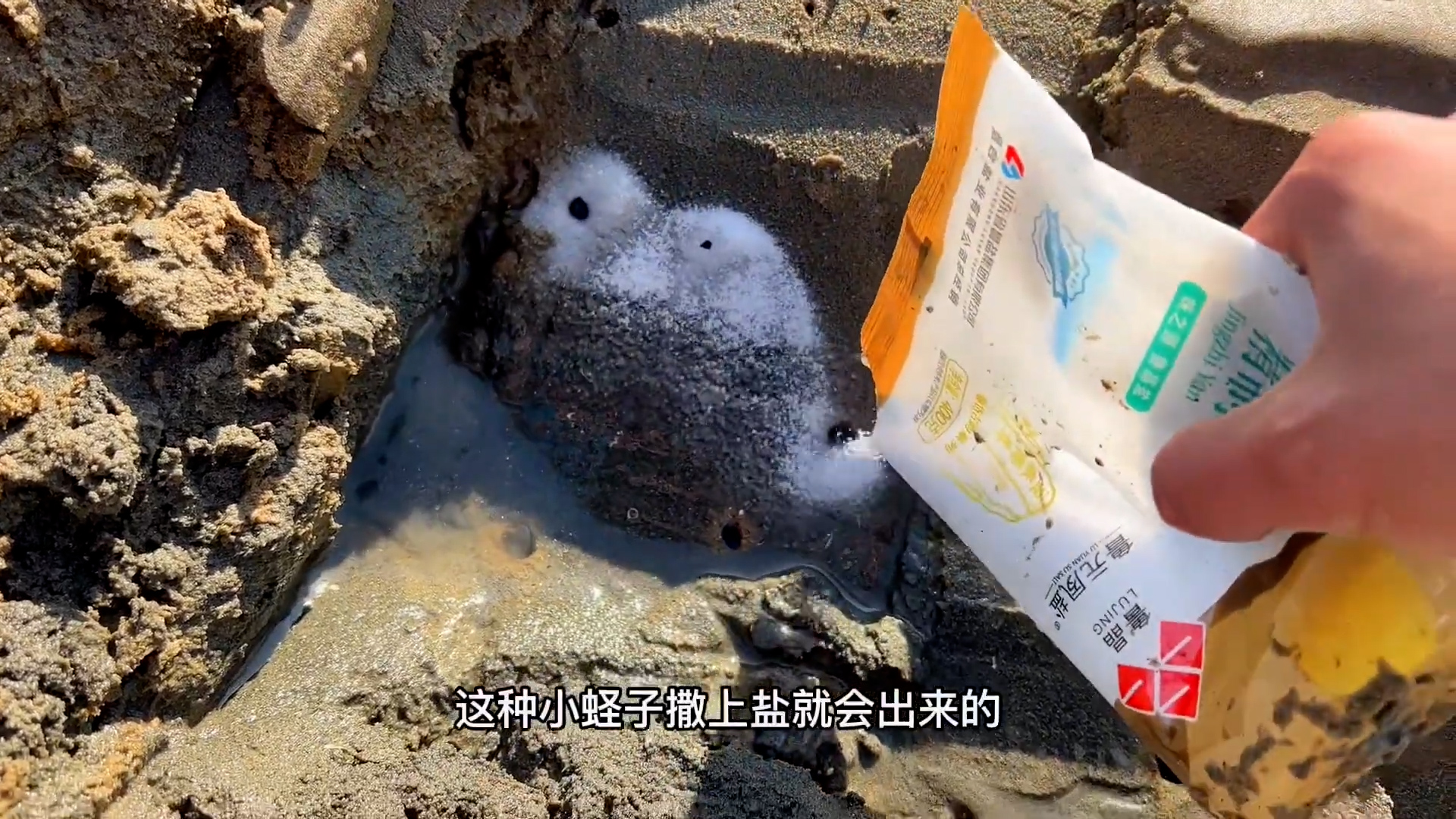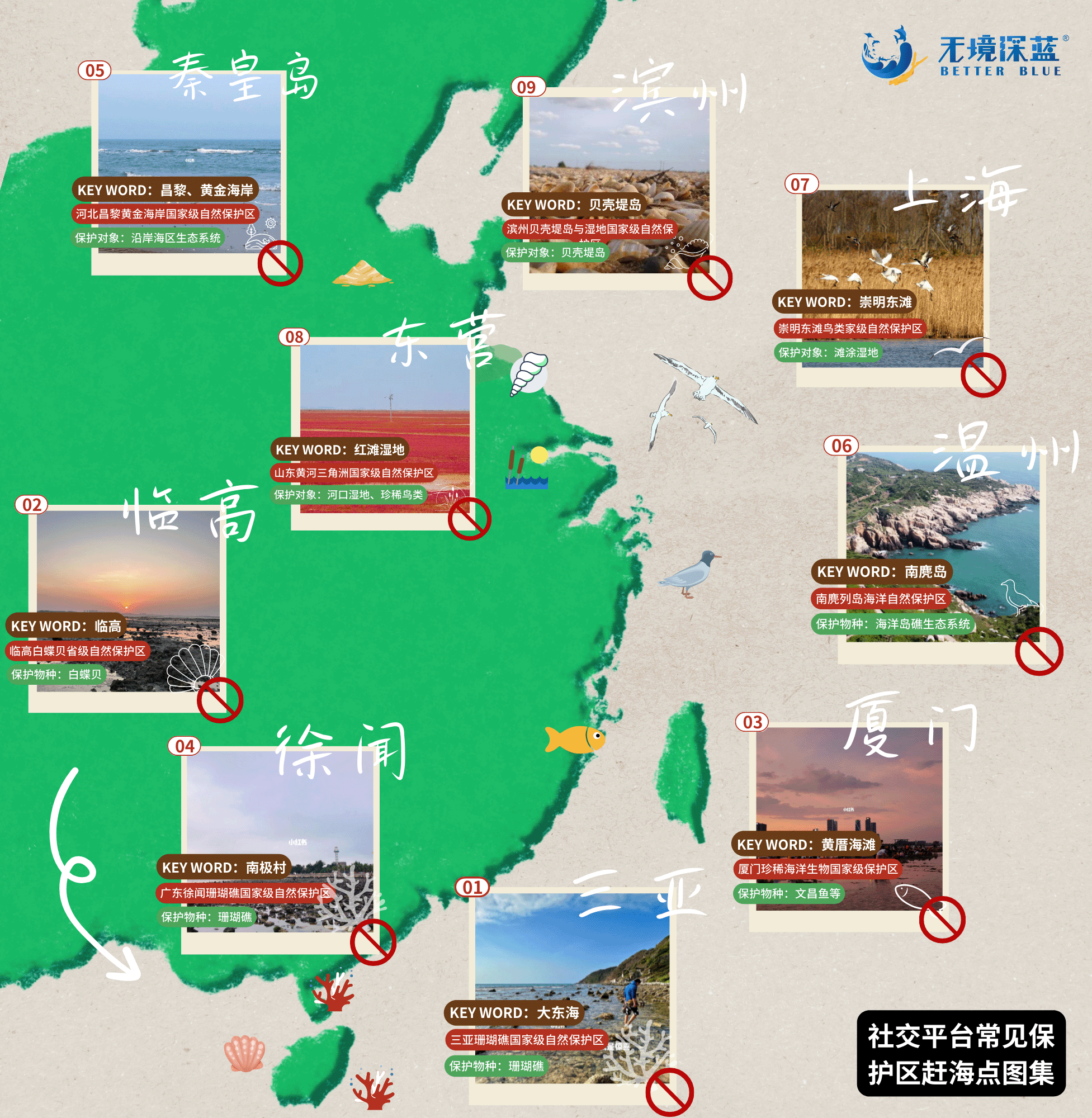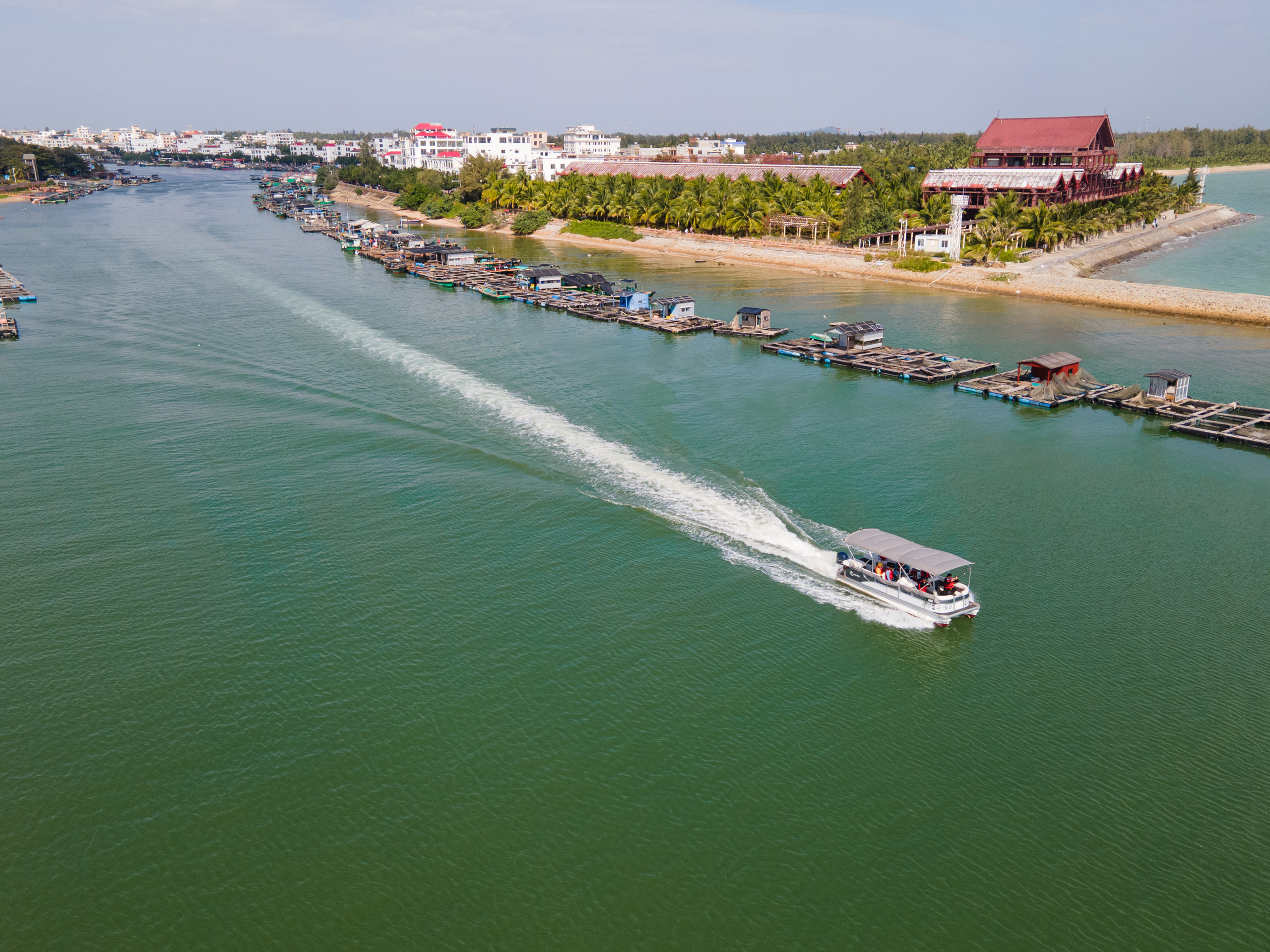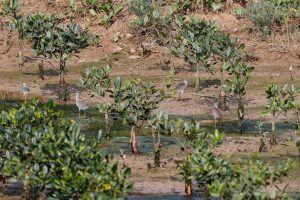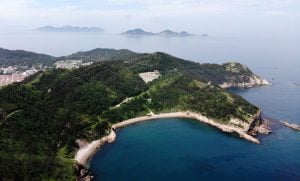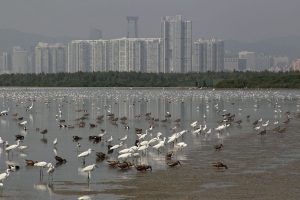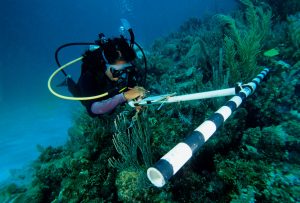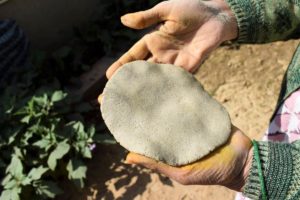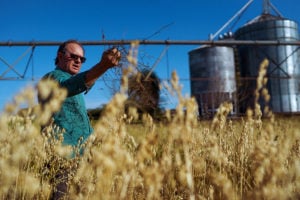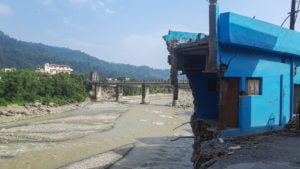On a rainy day in June, a group of lawyers stood on a tidal flat on Beigang, a small island off Hainan, dressed in rain gear and carrying umbrellas. They had had a good day of sightings: in less than an hour, they’d spotted pistol shrimp, monk crabs, Asian hard clams, razor clams and Beccari’s seagrass.
Their mentor in this endeavour was Jin Qi, a local from the island. She knows how to spot hidden clams through their keyholes in the sand and mud; quickly, she fished one out after inserting a slender metal hook. This traditional tool and technique aims to be gentle to seagrass and other organisms, as well as their habitats.
The lawyers were surveying and searching for organisms in order to find out how to better protect them from a legal perspective.
It’s important, because these days, new marine-harvesting methods seen in Beigang are prompting concern among local fishers and marine conservation NGOs. Tourists are flooding onto China’s foreshores to catch marine life. Their methods are often destructive, damaging seagrass, threatening legally protected species and habitats, and leaving mountains of rubbish behind in the process. All of this has been driven by social media videos where bloggers show off big catches from their visits to the coast.
For Jin Qi and other locals, the increase in tourists who engage in these destructive methods is reducing their own catch and affecting their daily lives and income.
Marine harvesting affects the public enjoyment of coastal beaches, and impacts species protection and marine ecology. The balance of tourism with the livelihoods of locals, as well as of resource protection and exploitation, and stewarding people’s relationship with the sea, have become important issues. Civil society groups and the government are beginning to consider them and find solutions.
Short videos popularise destructive techniques
At the beginning of October 2022, Beigang was inundated with tourists – and their vehicles – hoping to catch some sea creatures.
Since 2021, the Haiwen Bridge has passed through Beigang, connecting it to the cities of Haikou and Wenchang and making it more convenient for people from the surrounding area to visit. On the weekend of China’s National Day holiday on 1 October, the small village even had to call in police from Haikou to direct traffic on the island.
The situation in Beigang is symptomatic of the exploding popularity of marine harvesting – much of it destructive – among the public in China. In 2020, marine-harvesting videos were viewed over four billion times on video-sharing platform Xigua Video. By the end of June 2022, similar videos had been watched 36.69 billion times on short-form video platform Douyin.
Much of the behaviour exhibited by bloggers in their videos is negatively known in the industry as “ploughing”. This is when people assemble on the beach in droves to methodically dig up the entire surface of a beach in search of marine life. Other hunting techniques have included: using high-pressure water cannons or electric shocks; arbitrarily flipping over rocks; pumping all the water out of large rock pools, then filling them with animal meat and entrails as bait to attract carnivorous sea creatures; digging holes in the sand; digging out seagrass, and tipping salt into keyholes to force clams to emerge. People have even been filmed entering conservation areas and other places where harvesting is expressly prohibited. Often, they don’t release any of their catch, even when it is too small or unsuitable to consume or sell.
Many of the tourists who flock to small villages like Beigang emulate actions seen in the videos, hoping for their own big catch and a day of entertainment. But a lack of harvesting skills has meant many visitors complain of only catching a few shells after hours of attempts.
Over-harvesting threatens organisms across the food chain. As early as 2018, the Qingdao Municipal Committee pointed out that intensive harvesting activities had damaged habitats in the intertidal zone of Shandong province, resulting in a decline in biodiversity there.
Beigang is not unique in this issue. Huangcuo Beach in Xiamen, a city on China’s south-eastern coast, is an important habitat for lancelets. These animals are Class II-protected – the second strictest national protection classification. In 2021, hordes of tourists descended on the beach to dig for clams and cockles, causing serious harm to both the lancelets and the conservation area. Their behaviour was documented by the media, who called it “destructive”.
Adverse environmental impact
In fishing villages, the men are mostly labourers, fishers, or farmers, while many women make a living by harvesting.
Liu Yi, executive director of the China Mangrove Conservation Network, holds a doctorate in environmental science and has been keenly focused on the ecological protection of coastal regions for many years. “There are many ways to conduct marine harvesting,” he says. “Locals know what to catch, in which season, and what not to… They have specialised tools… Some catch razor clams, and others sandworms or other molluscs; they don’t all catch the same species.”
Take Jin Qi as an example. The expert marine harvester’s focus is sandworms. She knows how to locate them, and uses appropriate tools that do not affect the beach environment or other creatures. Meanwhile, villagers who lack the skills to dig for sandworms instead go for clams, mantis shrimps and snails, she explains.
So far, traditional marine-harvesting techniques used by fishers have posed no threat or damage to the local marine environment. “This is folk wisdom,” Liu Yi said.
Tidal flats like the one in Beigang host other organisms significant to the marine environment and ecology, such as seagrass and mangroves, which help mitigate climate change by absorbing and storing carbon. The influx of harvesting tourists has caused many negative environmental impacts on the intertidal zone in a short period of time.
The most obvious of these is pollution. Yun Hong, executive director of the China Blue Sustainability Institute, or China Blue, gave the example of tourists who sprinkled salt on the tidal flat to catch razor clams: “The quantity of salt is the main thing. A small amount won’t have much of an environmental impact, but if a whole bag is tipped out and then discarded, it’ll cause direct pollution and affect other organisms within the tidal flat.” China Blue has been conducting projects, such as the expedition with the lawyers, to help local authorities establish rules on marine harvesting and reduce the adverse impact of improper harvesting on fishing communities.
Over the years, China’s marine bulletins have demonstrated that areas associated with tourism, leisure and entertainment, agriculture, and fishing, as well as ports and shipping sites, have a high density of marine garbage. Rubbish left behind from marine harvesting – including food waste, plastic, and discarded nets – accumulate in the intertidal zone, polluting the environment, and impacting the ecosystem.
Creatures in the intertidal zone hide in the silt or under reefs and rocks by burying or burrowing. Many tourists recklessly flip them over or trample on tidal flats, which can harm these creatures and damage their habitats.
Over-harvesting threatens organisms across the food chain. As early as 2018, the Qingdao Municipal Committee pointed out that intensive harvesting activities had damaged habitats in the intertidal zone of Shandong province, resulting in a decline in biodiversity there.
Marine harvesters also inadvertently trample on seagrass – which lives and flowers completely underwater – or dig it up deliberately in an effort to catch sea creatures. Seagrass has important ecological value and functions: not only does it provide habitats and nurseries for marine organisms, it can also help mitigate climate change through carbon capture. In recent years, the increase in tourists has created environmental issues such as pollution of seagrass beds in Hainan, resulting in a downward trend in biodiversity, distribution, density and biomass.
The south side of Beigang Island is an internationally important wetland, and the site of the Donghai Port Nature Reserve, which exists to protect the area’s mangroves. Marine harvesting is prohibited within conservation areas such as these, with legal repercussions for trespassing. But tourists and fishers still go there to catch creatures, either oblivious to these rules or disregarding them.
Zhao Peng, associate researcher at Hainan University’s School of Marine Science and Engineering, is leading a study into the impact of social media on marine biodiversity. He told China Dialogue that, “aside from the environmental consequences, [marine-harvesting tourism] also impacts villages, as fishers get crowded out from their fishing space and source of livelihood.”
Jin Qi, of Beigang, agreed, saying that she didn’t manage to find as many sandworms as before. “There are too many people coming to harvest clams, so there are a lot fewer creatures this year compared to last,” she added.
Yun Hong said that coastal fishing communities have a mixed reaction towards the marine-harvesting craze. “Some villagers are happy because there are more tourists, and they can set up stalls to make money, but some of the [fishers] who depend on marine harvesting for their livelihoods feel it disturbs them. There are too many people coming, which impacts local resources.”
Taking action: How to fish in an ecological and civil manner
There is currently very little research on the impact of marine harvesting on tidal flat organisms, ecology, and even communities, but that hasn’t stopped a number of organisations from taking action.
Better Blue, a marine-protection organisation, has posted a map of common conservation areas on social media where people are prohibited from entering, as well as protected species in different areas to remind the public not to catch them. The Guangxi Biodiversity Research and Conservation Association has created a code of conduct for tourists seeking to harvest marine creatures, focused on protecting the mangroves and local marine ecology, specifically the Class II-protected Chinese horseshoe crabs found in the coastal wetlands of Beihai.
Jin Qi led the lawyers in their experience of marine harvesting, an activity jointly organised by China Blue and the Hainan Lawyers Association. Through collaboration with legal institutions, they hope to reduce the adverse impact of marine harvesting, impress upon people the biodiversity of coastal wetlands, and provide a reference for coastal protection in law. They are investigating gaps in the current legal provision and loopholes that could be closed.
The China Mangrove Conservation Network has proposed the concept of “scientific marine harvesting”. The network’s executive director, Liu Yi, explained that this is distinct from “traditional” marine harvesting, which is purely a means of obtaining seafood. Scientific marine harvesting is where knowledge, rather than food, is the primary goal. In 2022, he published “Let’s Go Marine Harvesting”, a series of three books raising awareness of beach biodiversity to publicise the concept. He said: “We hope to promote direct [and responsible] contact with the sea through marine harvesting, so the public can connect with and understand the ocean, the intertidal zone, and its biodiversity.” Through the books, tourists can find out which creatures should not be disturbed, which should be released after observation and which are too small to catch.
Liu Yi said two rules should govern marine harvesting: it must be strictly prohibited in conservation areas, and the capacity of non-protected areas to withstand harvesting should be evaluated before the area is opened to the public. “If the intertidal zone can only sustainably support 200 people to harvest sea creatures without affecting the reproduction of local species, then 2,000 people coming will exceed the capacity of the area, whether they’re led by local villagers or not,” he said.
In 2022, China Blue and five Hainan eco-tourism and conservation organisations launched their “ten recommendations for ecological marine harvesting”, which offers guidance on caring for the environment, protecting the ocean, and respecting local communities. The core considerations are to protect the balance of local ecological systems, minimise the impact on tidal flat ecology and organisms, protect habitats, and leave as little trace as possible.
Be safe
• Understand local sea conditions and tides, to ensure safety
Care for the environment
• Take away your own rubbish, and actively pick up discarded nets and other plastic waste
• Wear physical sun protection, such as long sleeves and hats, to reduce the use of sunscreen
Protect the ocean
• Focus on observing and photographing nature; try not to harm marine life through direct contact
• Gently turn over rocks, and return them to their original position
• Do not remove protected creatures such as horseshoe crabs or tiger cowries
• Do not use chemical agents such as edible salt, nor electricity or power tools
• In areas where seagrass grows, do not use excavating tools such as rakes, which damage the seagrass
• Do not conduct marine harvesting en masse, and give the sea time to recover
Respect communities
• Respect local customs and culture, and do not disturb the local community
In November 2022, at the Ramsar Convention on Wetlands’ COP14 meeting, a number of Chinese organisations jointly issued the Civil Marine Harvesting public initiative. This called on all members of society to care for the environment, protect the oceans and respect communities.
The increase in tourism driven by marine harvesting has been a double-edged sword for Beigang Island. Despite the environmental damage, the tourism has brought with it benefits, and China Blue’s Yun Hong said the island had changed dramatically since. The government had improved environmental sanitation management and built infrastructure such as car parks and public toilets. Social organisations had also increased scientific awareness about the area’s ecology, and the human living environment on the island was now of a higher standard, added Yun Hong.
Beyond marine harvesting
As coastal flats are public resources, it would be unrealistic to prohibit tourists from marine harvesting outside conservation areas. Additionally, tourists contribute to the local economy and are regarded by the government as recreational fishers. By extension, they’re seen as increasing income from fishing on the whole and helping to transform the fishing industry and villages.
In September 2022, Hainan province piloted measures for recreational fishing management, which included proposals on regulating the development of the industry. Yun Hong explained that, galvanised by the surge in popularity of marine harvesting on Beigang, various government departments had formulated plans to promote the sustainable and ecological development of marine harvesting. These plans establish responsibilities for different regional divisions and coordinate work across areas such as environmental monitoring and public advocacy.
Liu Yi suggested opening up marine harvesting areas in non-conservation regions for tourists and residents, along with regularly breeding and releasing, or supplementing with additional marine stock, so tourists can have a more rewarding experience of marine harvesting. This would also benefit the local community, he says, as “guided eco-tours where tourists can be taken for marine harvesting, particularly [led by] experienced fishers … or mobile elderly people, can generate income and increase employment opportunities.”
But merely advocating for ecologically minded and civilised marine harvesting isn’t enough to solve the various problems related to tourism, resource protection, and improving the livelihoods of fishing communities. Acknowledging that, China Blue are exploring different solutions. They have been working with fisher collectives in Tanmen township, eastern Hainan, to create popular science tourism services centred around coastal fishery resources and culture. The organisation has also been discussing industrial development plans for fishing communities with the Beigang Island Village Committee and Revitalisation Team.
Yun Hong said that China Blue’s long-term goal is to promote the sustainable development of coastal fishing communities: “Ecological marine harvesting is a starting point for our advocacy. We wish to see what attitudes all parties have towards the protection and utilisation of coastal public resources, how it’s implemented, and the capacity of fishing communities to cope. This is, in fact, all a part of transforming and developing fishing villages.”
